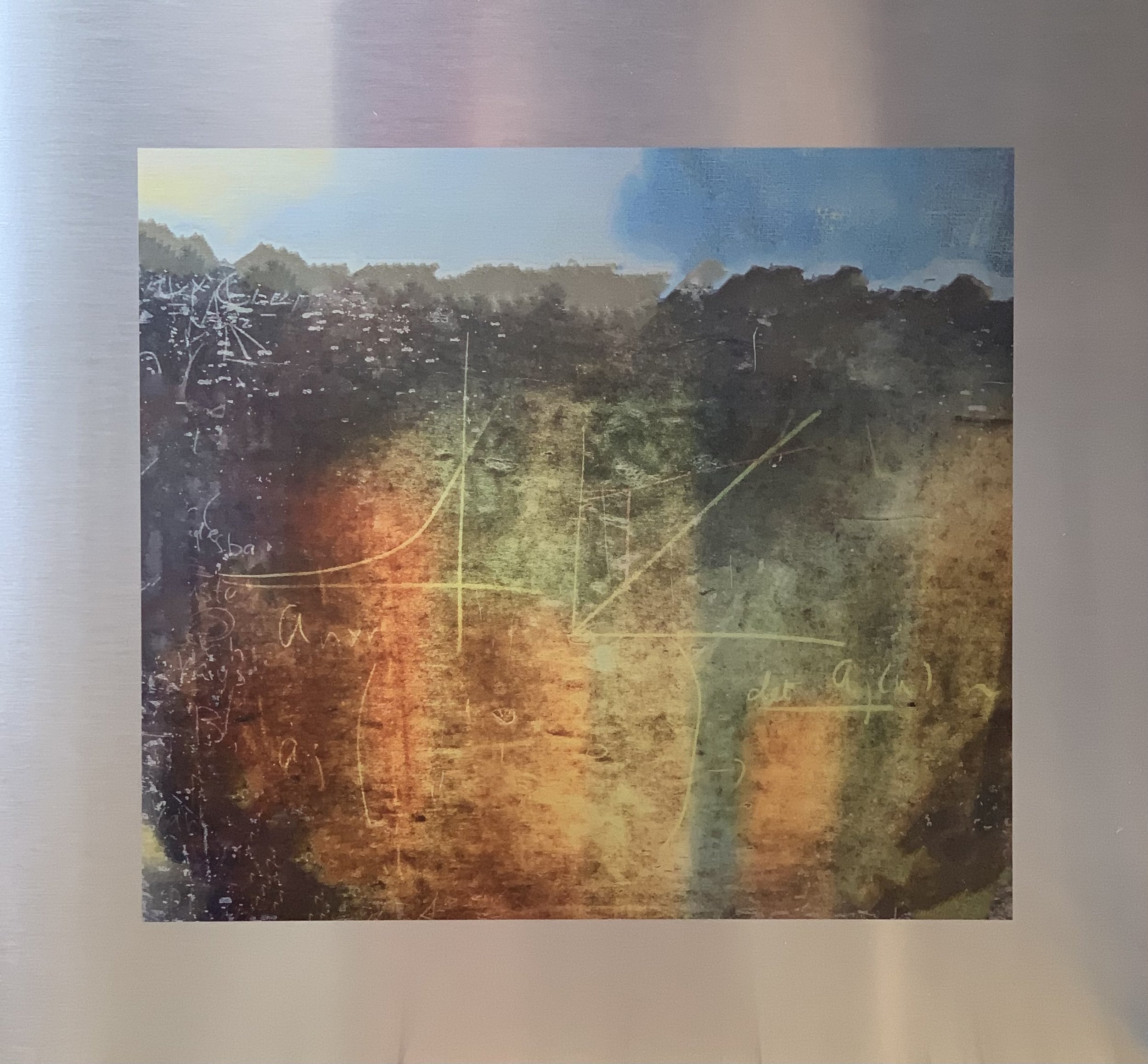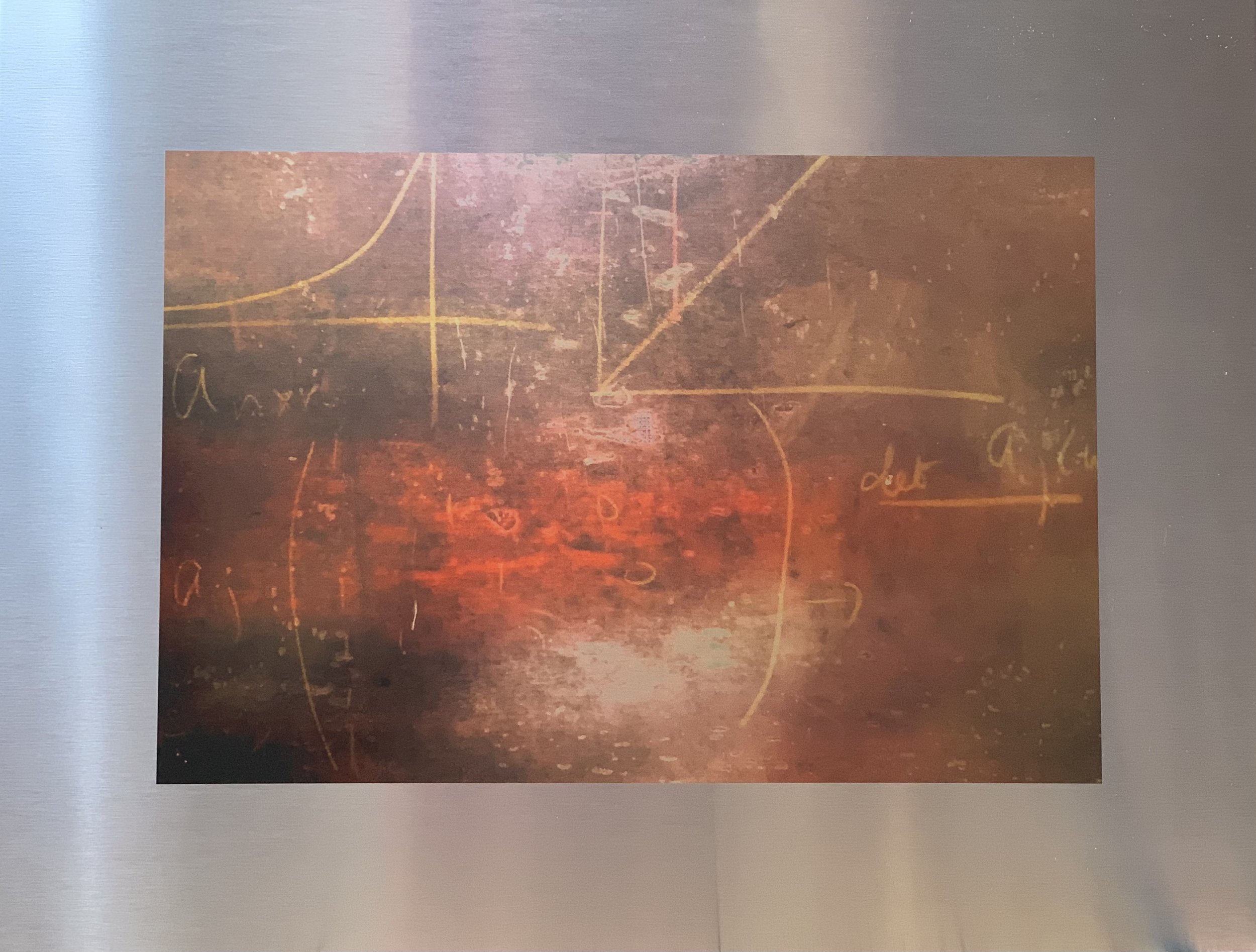It has been a very interesting project plus a lot of fun to collaborate with mathematicians who appreciate art. Below is the result of this cooperation presented by the London Institute for Mathematical Sciences at the Roayl Institution. I am very grateful to the whole team at LIMS and especially to my friend Yang-Hui He, who encouraged me to do it.
Art of mathematics
Marina Murvanidze Mitchell creates four original artworks showcasing the beauty of mathematics to celebrate Prof. Yang-Hui He’s Friday discourse.
In celebration of London Institute Fellow Yang-Hui He’s delivery of the Royal Institution’s renowned Friday evening discourse lecture on 24 February, his fellow Princeton alumna Marina Murvanidze Mitchell has created and donated four pieces of original artwork for display following the lecture’s conclusion.
Mitchell, a London-based Georgian American artist, explores the ambiguity of spaces and experiences through constructed images. She uses painting and photography as her main media. In these artworks, she has transformed the London Institute’s blackboards into harmonies of creativity and scientific discovery.
Extracting the formulaic nature of our fundamental research and fusing it with a hue tint tinge, these images tell a story of the beauty in mathematics. Cast onto aluminium, mathematical derivations are captured in a transcendent light. For us, each theoretical endeavour begins with a spark of creativity and chalk on a blackboard, and these artworks highlight this intrinsically creative nature of mathematics.
The artwork will be exhibited on the evening of the discourse lecture and sold in support of the London Institute’s Arnold and Landau Fellowships, which support theorists from Russia, Ukraine and Belarus. A limited number of copies will be available. To register your interest in purchasing please contact Sarah Myers Cornaby, Director of Development, smc@lims.ac.uk.
Marina Murvanidze Mitchell is a London-based Georgian American artist. In 2022 she won the Liberty Specialty Markets (LSM) Art Award. Her creativity is inspired by movement, places, and people who live outside their country of origin. She makes art to inspire imagination.
Spectral Blackboard
Shadows of Riemann
Marina Murvanidze Mitchell
Constructed image, direct printing on brush-finished aluminium
Image size: 48 x 27 cm; Outer size: 58 x 37 cm
Ltd ed 1/20
First impression, £350
Afterglow of a Function
Marina Murvanidze Mitchell
Constructed image, direct printing on brush-finished aluminium
45.1 x 40 cm, outer size: 61.1 x 56 cm
Ltd ed 1/20
First impression, £350
Vibrant Matrix
Marina Murvanidze Mitchell
Constructed image, direct printing on brush-finished aluminium
44.6 x 30 cm, outer size: 60.6 x 46 cm
Ltd ed 1/20
First impression, £300
Determination
Marina Murvanidze Mitchell
Constructed image, direct printing on brush-finished aluminium
44.8 x 40 cm; Outer size: 60.8 x 56 cm
Ltd ed 1/20
First impression, £350
The universe is rich in patterns, and scientists at the London Institute have a gift for spotting them. We build theories—concise mathematical descriptions of patterns—and identify their testable consequences. We pursue the most intriguing patterns, without concern for their usefulness, which leads to the most profound discoveries. Our basic-science breakthroughs change the way we see the world and shape it. They are the source of new insights, new predictions and new technologies.




